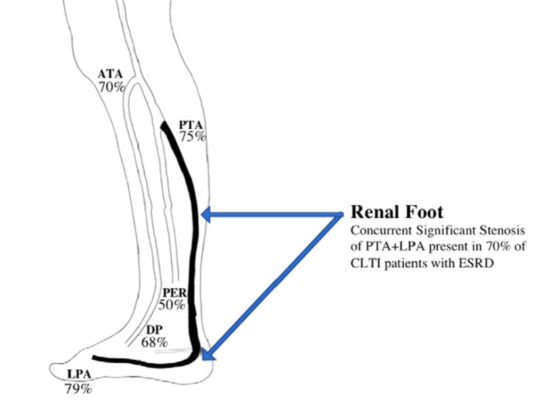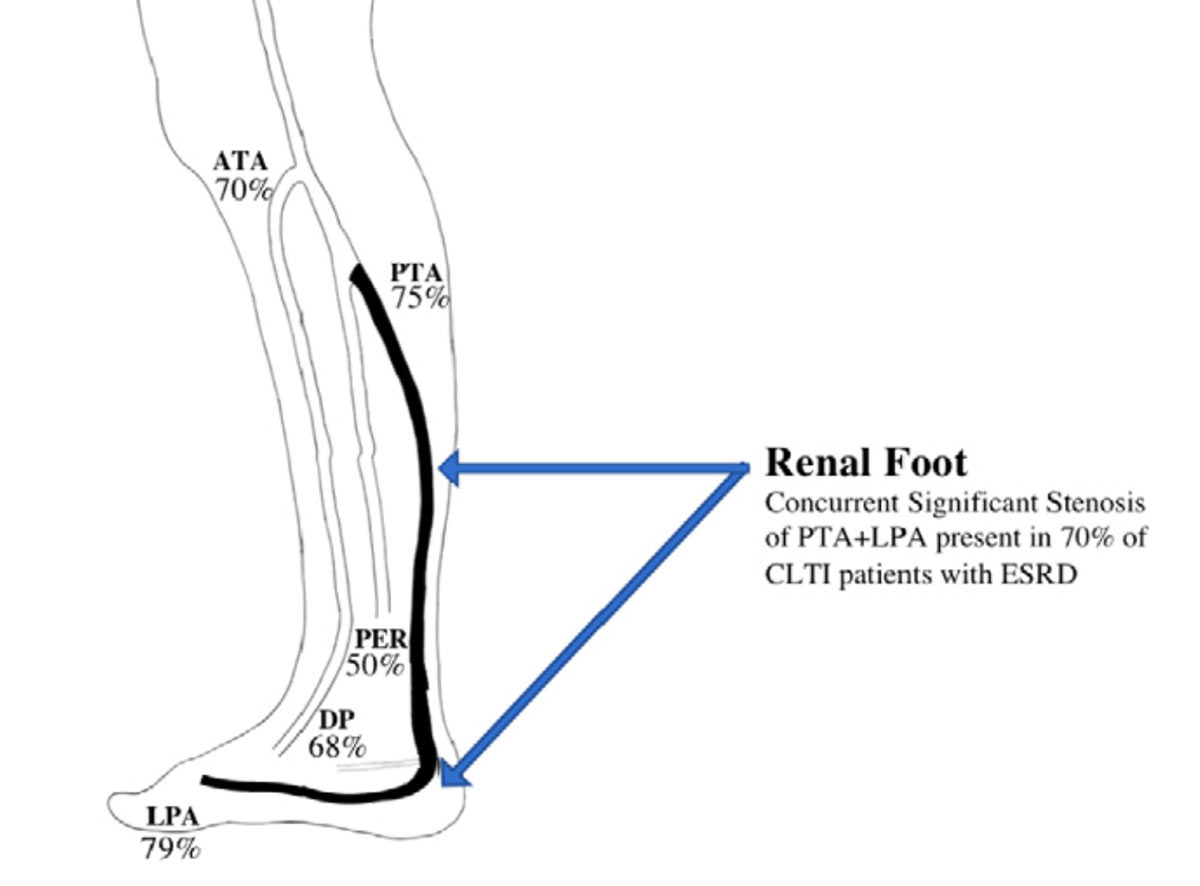
Figure. The “renal foot.” The diagram displays the percentage of individuals with significant stenosis in the posterior tibial artery (PTA) (75%), peroneal artery (50%), anterior tibial artery (ATA) (70%), lateral plantar artery (LPA) (79%), and dorsalis pedis (DP) (68%) arteries in end-stage renal disease (ESRD) patients with chronic limb threatening ischemia (CLTI). The accompanying table compares the rates of significant stenosis of the lumen of the PTA and LPA arteries in ESRD and non-ESRD patients. It then further compares the rates of individuals with concurrent significant stenosis in both the PTA and LPA. Use is per the Creative Commons License 4.0.
Patients with chronic limb threatening ischemia (CLTI) and end-stage renal disease (ESRD) have greater risk of limb loss compared to those with CLTI alone. These researchers investigated angiographic patterns in patients with CLTI and evaluated for differences based on ESRD status.
They reviewed lower extremity angiograms of 152 CLTI patients at a single academic medical center from 2011 to 2017 and analyzed them based on the Graziani and Bollinger classification systems. The researcher evaluated for angiographic patterns and arterial disease severity categorized by the presence or absence of ESRD.
The analysis included 152 CLTI patients (161 angiograms). Patients’ mean age was 63.4 ± 11.3 years and 20 (12.4%) patients had ESRD. In they study population, infrapopliteal arterial disease was more severe than femoropopliteal disease. Disease of the arteries providing direct flow to the plantar arch was more severe in ESRD patients compared to non-ESRD patients, evident by higher Graziani Class VII disease (20% vs. 4.9%, P = .03). ESRD patients also had higher rates of concurrent significant stenosis of the posterior tibial and lateral plantar arteries (70% vs. 23%, P < .0001).
The authors concluded that in people with CLTI, infrapopliteal arteries are more severely affected than proximal femoropopliteal arteries. ESRD patients exhibit a pattern of arterial disease, which they termed the “renal foot,” that frequently involves arteries providing direct flow to the plantar arch.
Source: Baghdasaryan PA, Bae JH, Yu W, et al. “The Renal Foot” – angiographic pattern of patients with chronic limb threatening ischemia and End-Stage Renal Disease. Cardiovasc Revasc Med. 2020;21(1):118–121.








